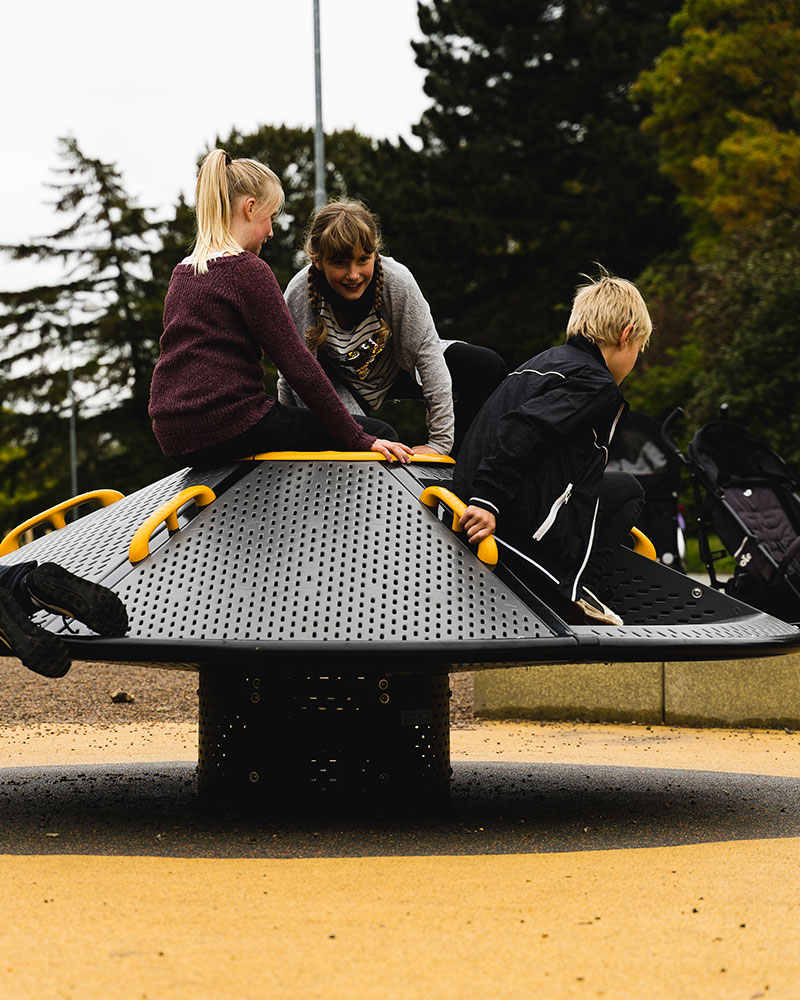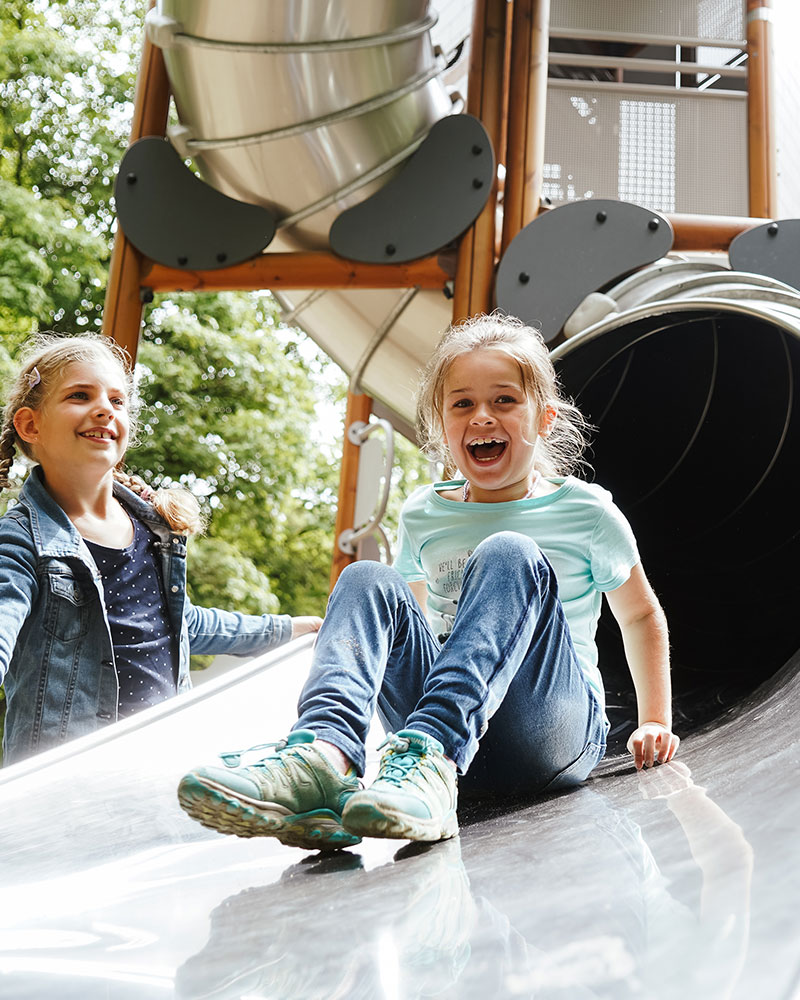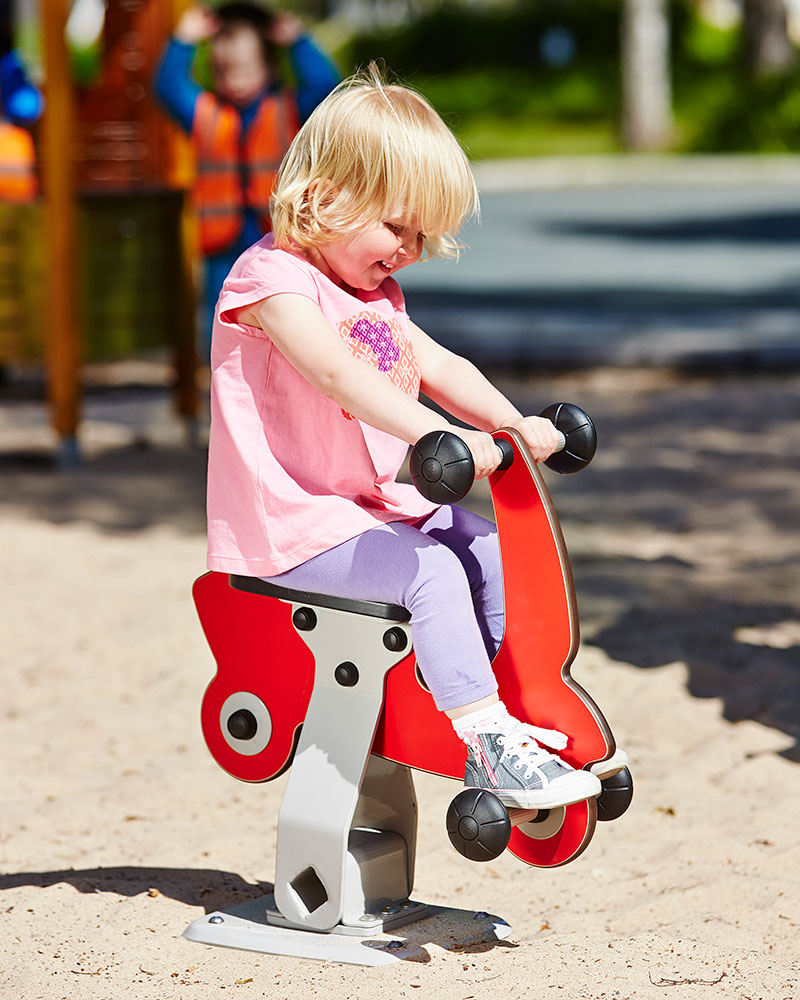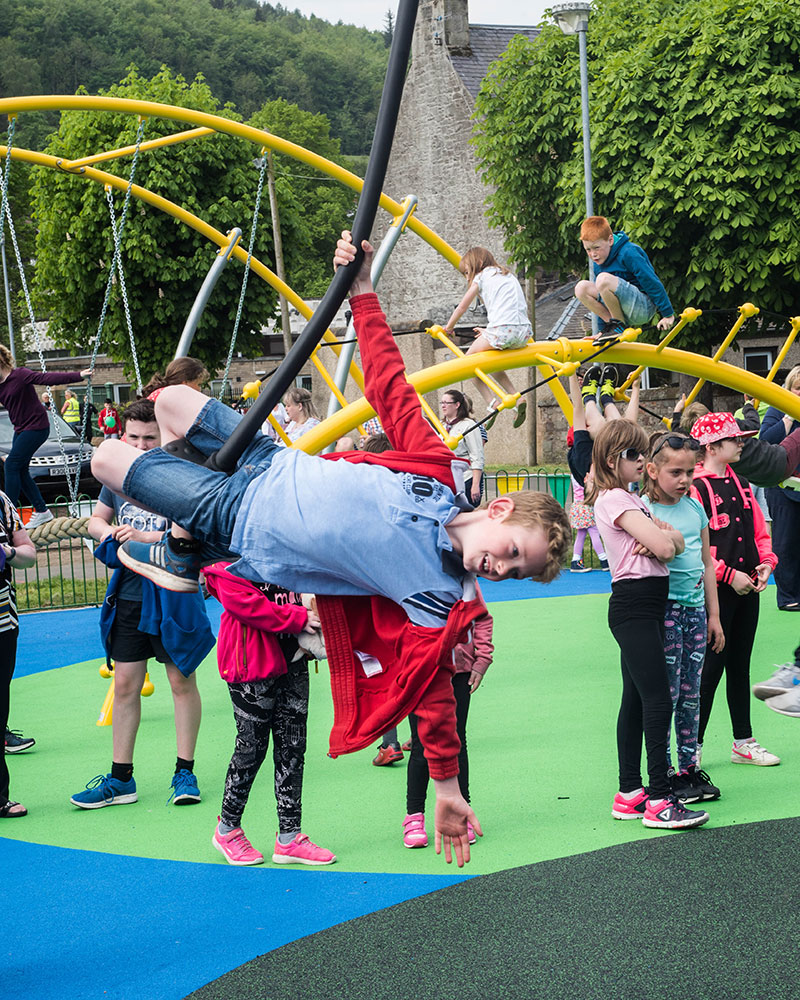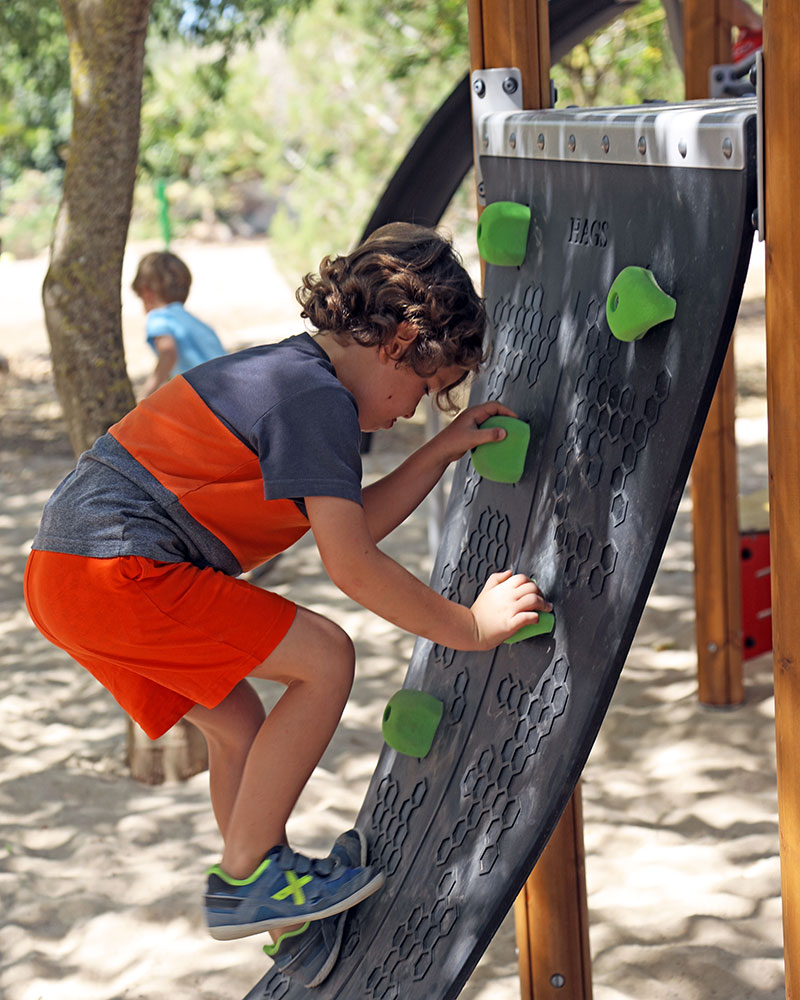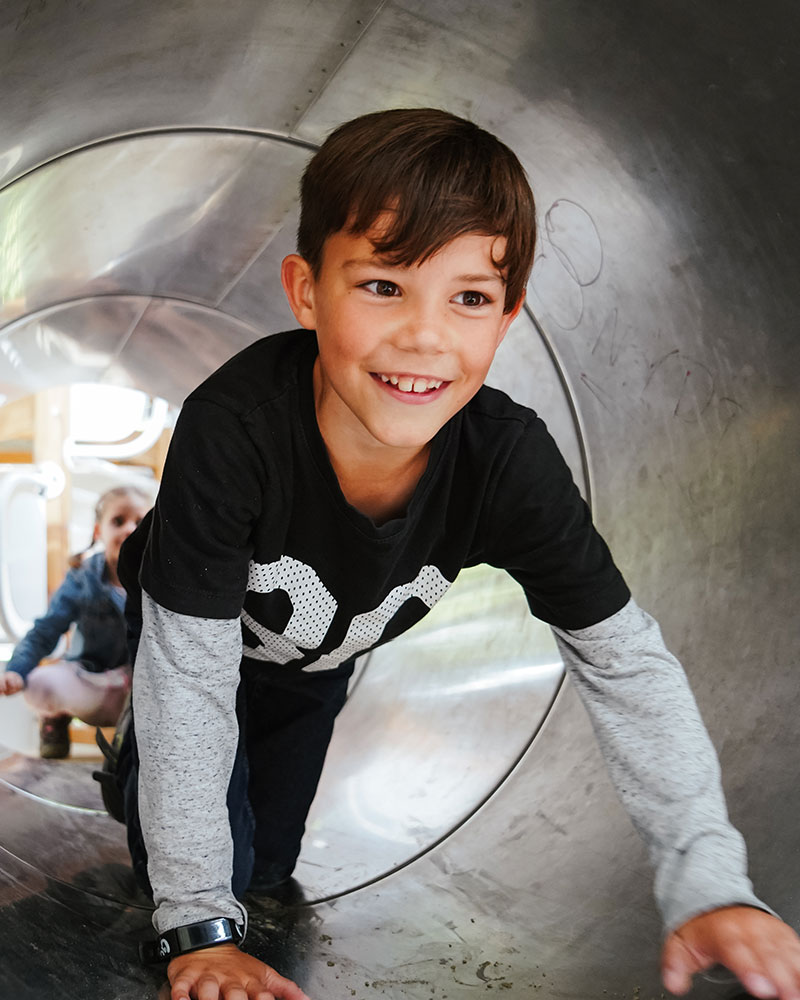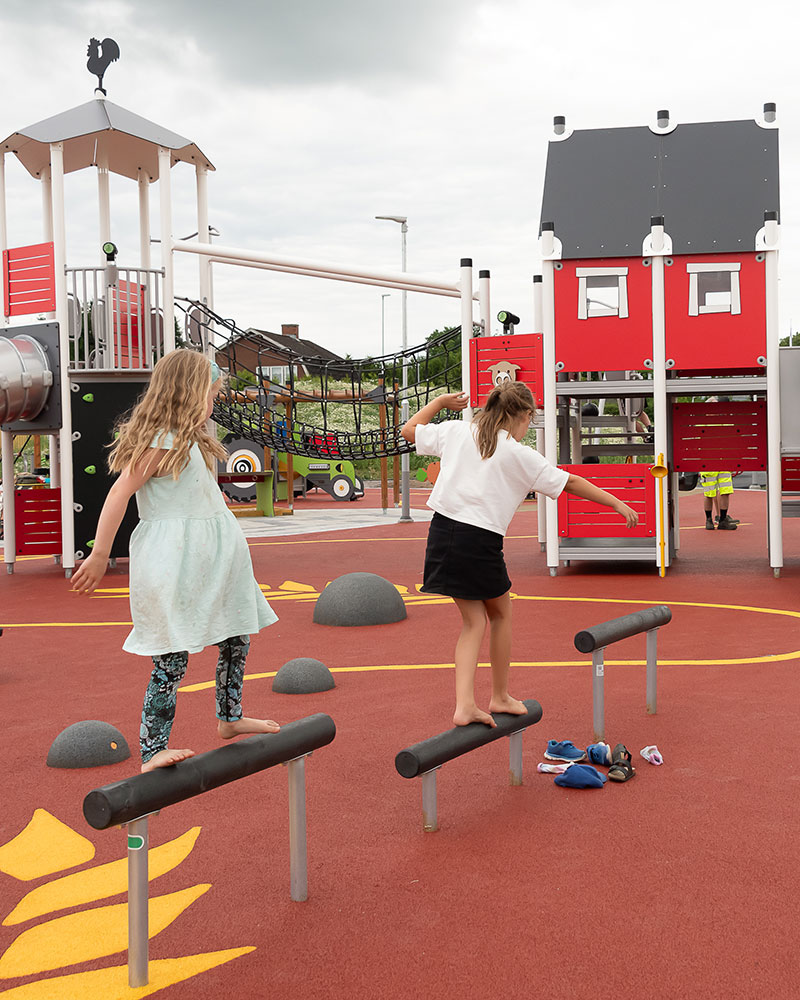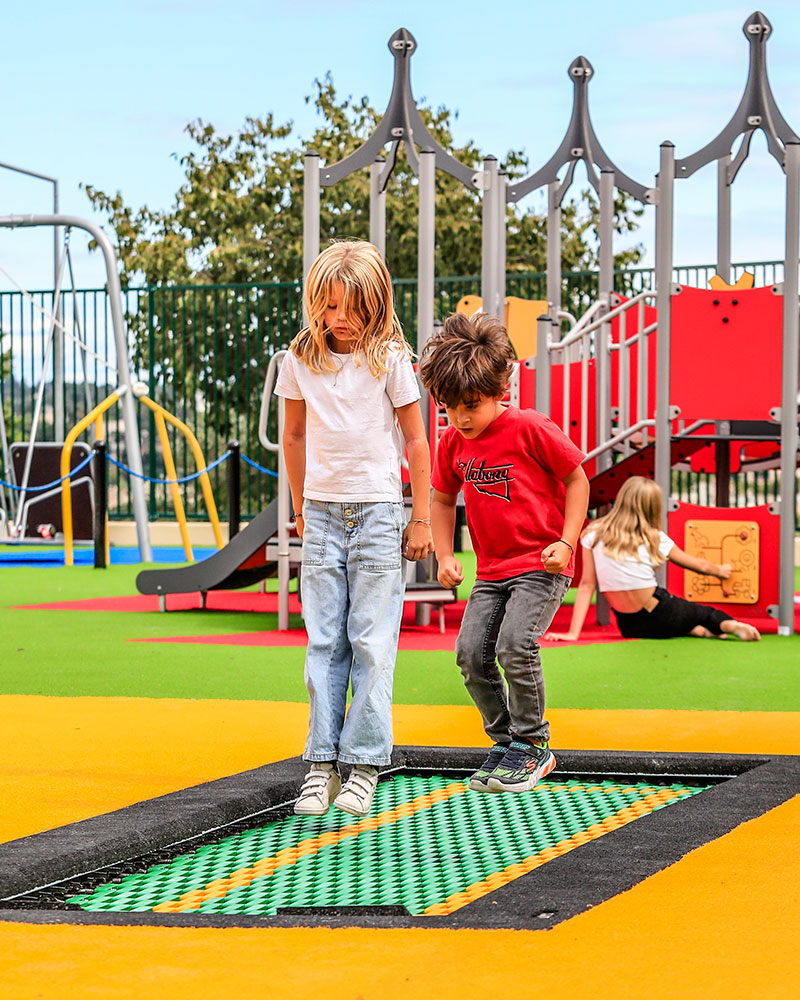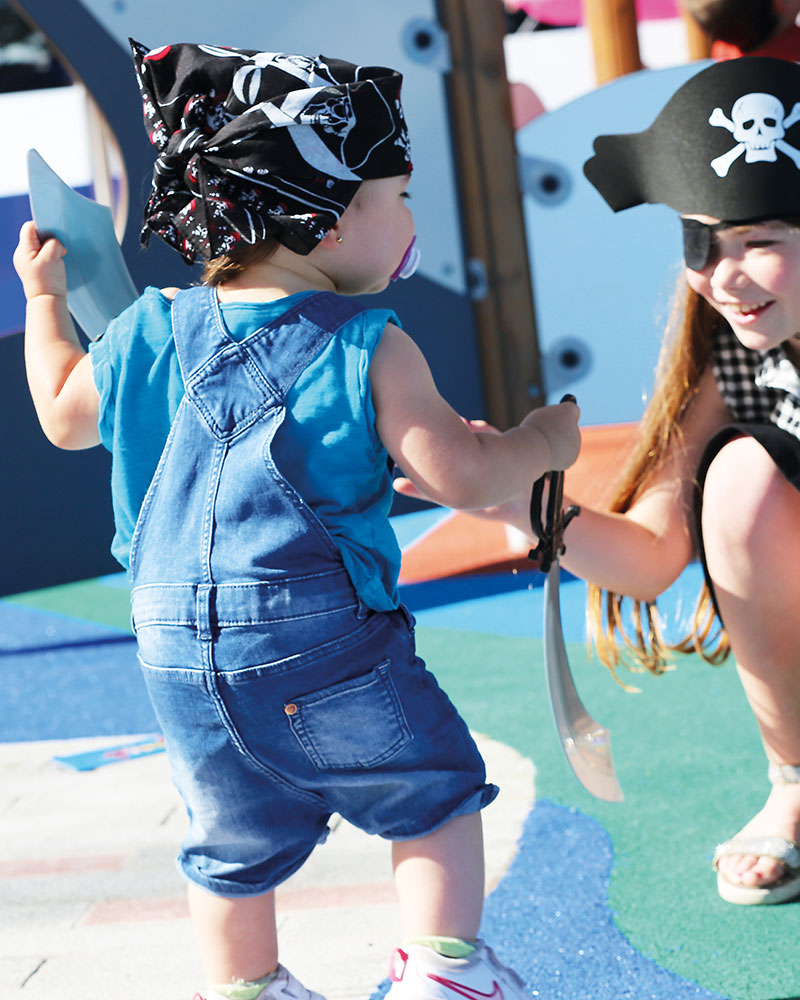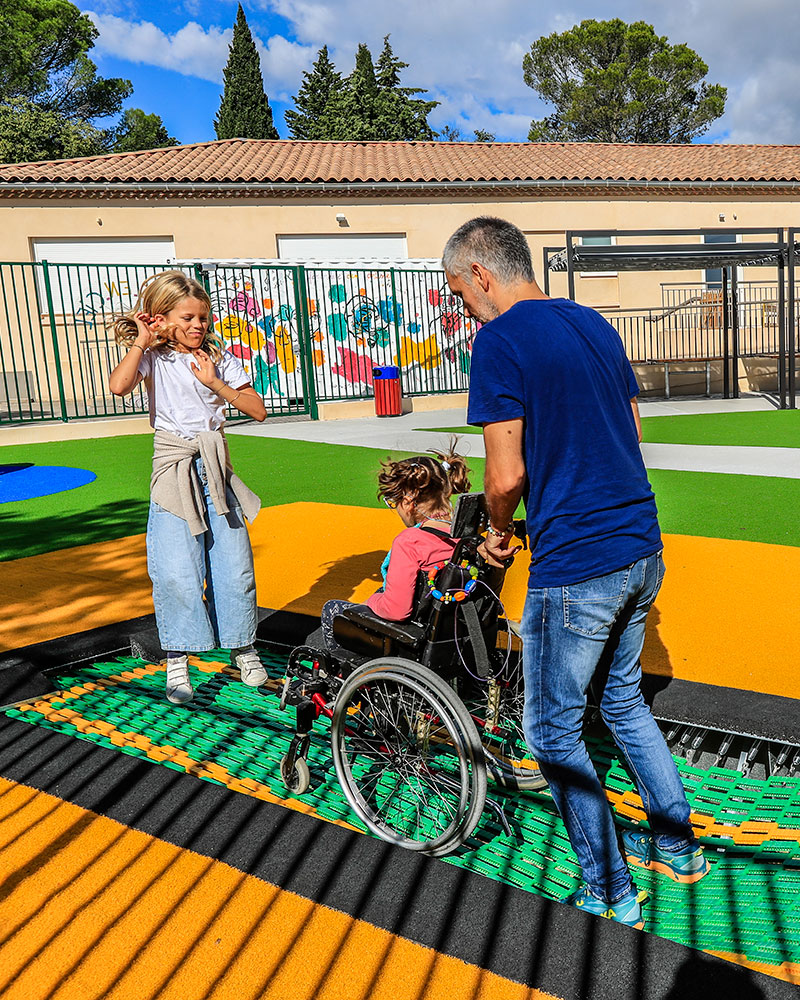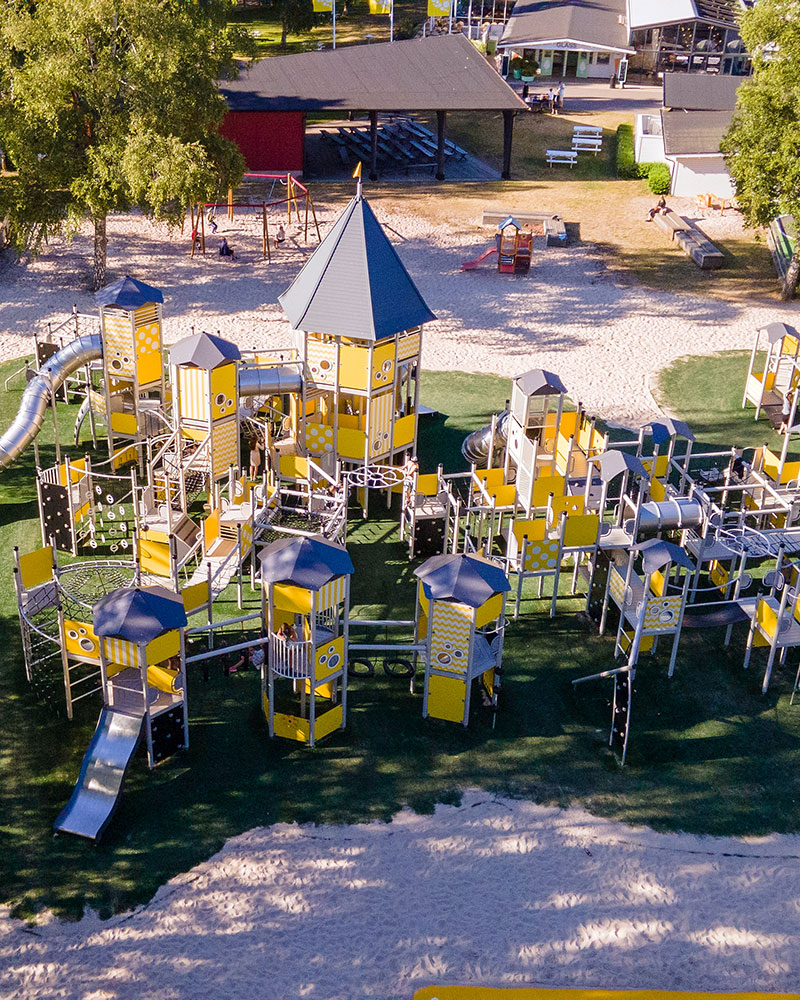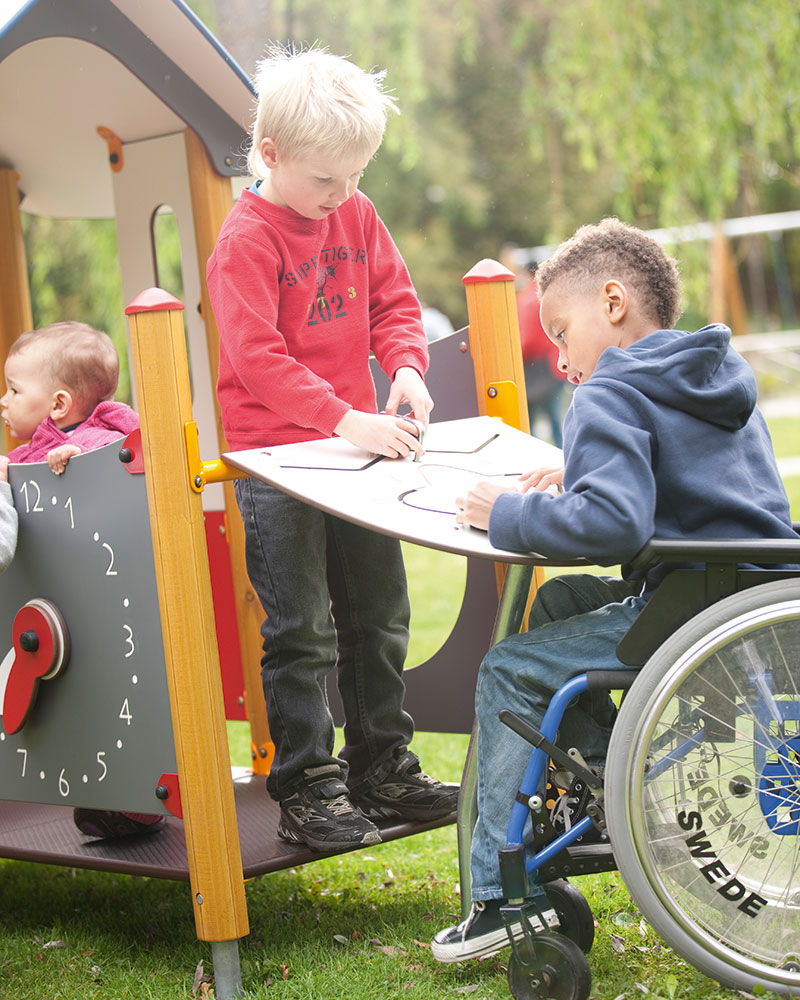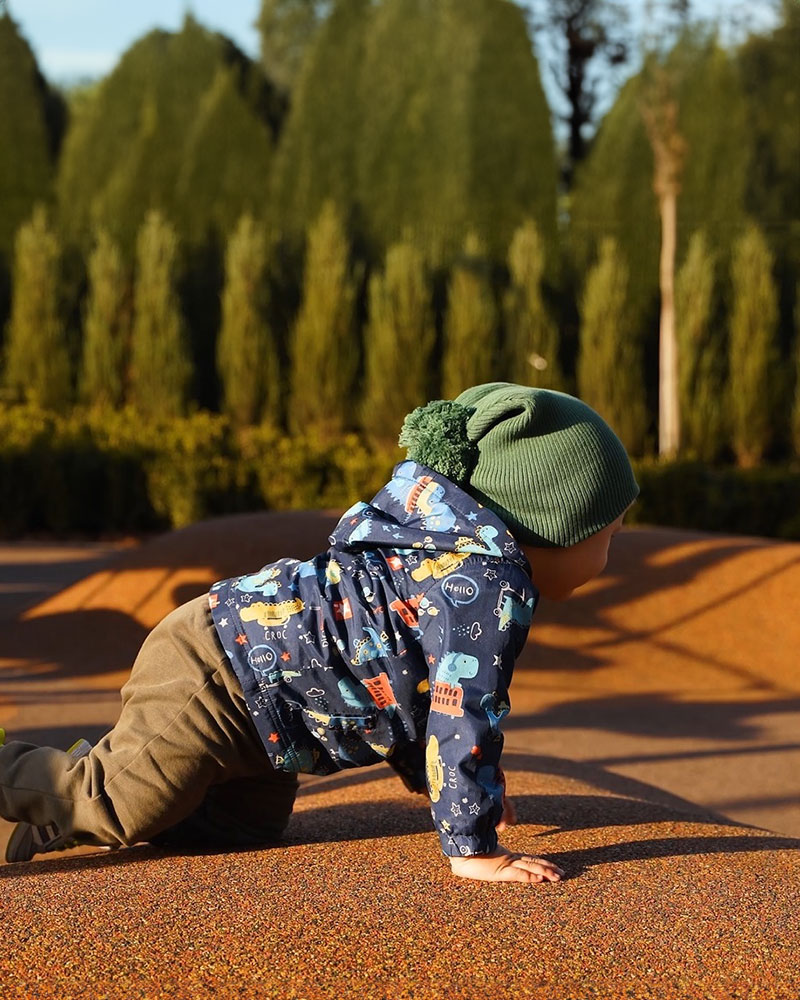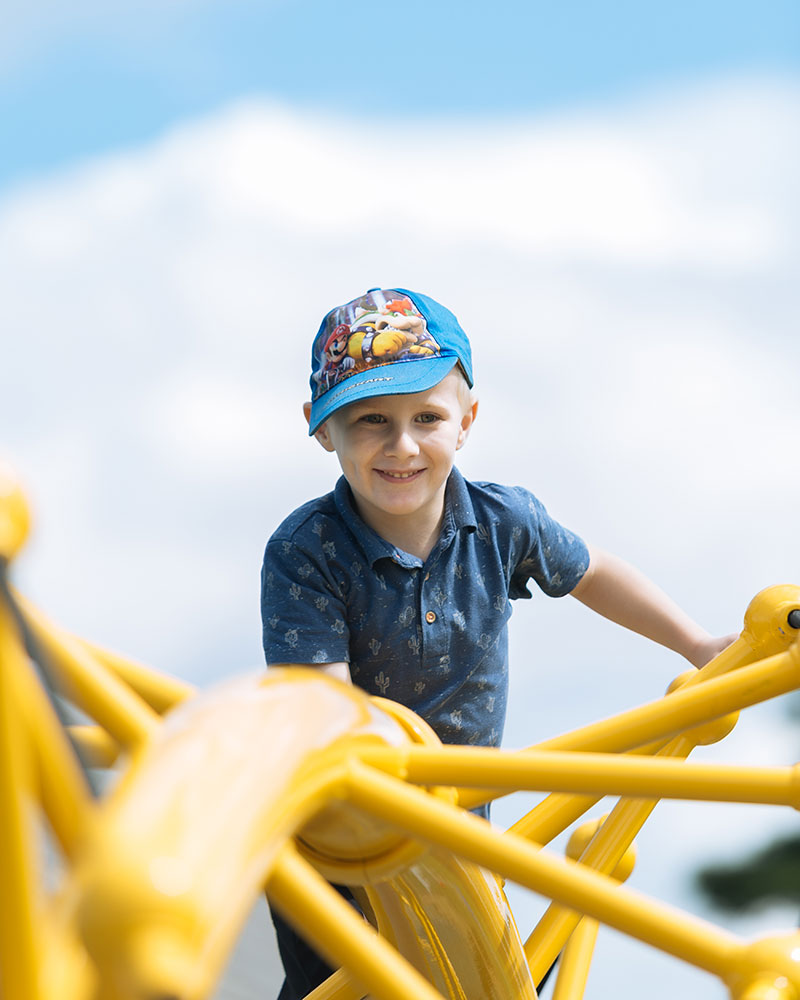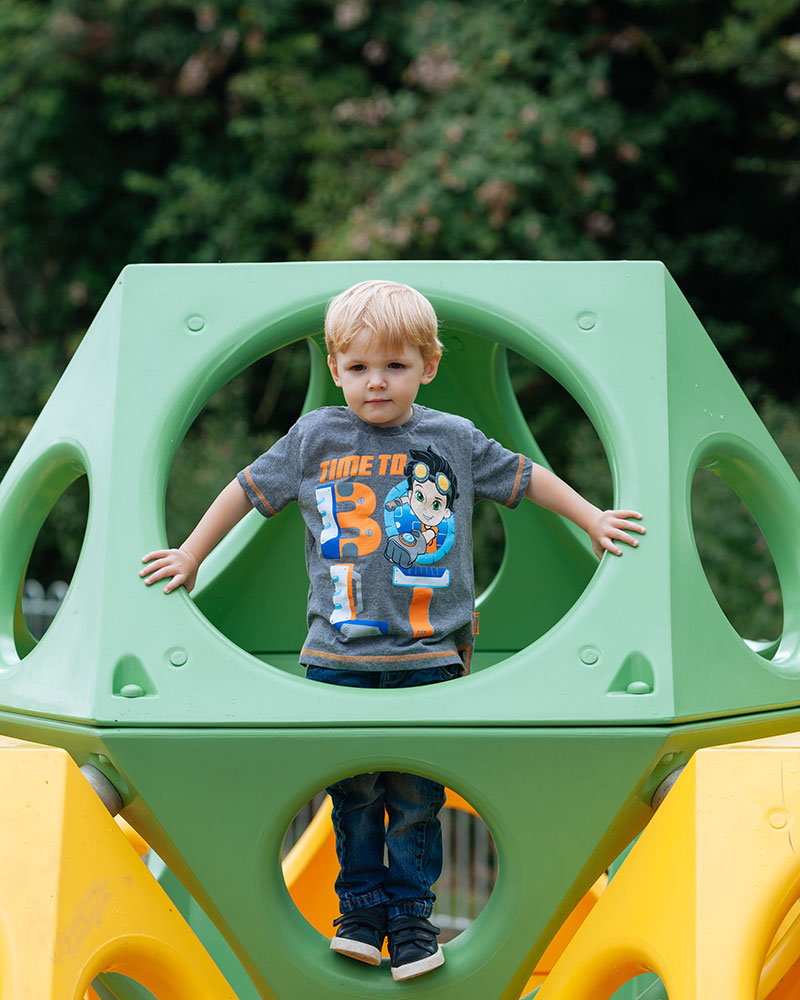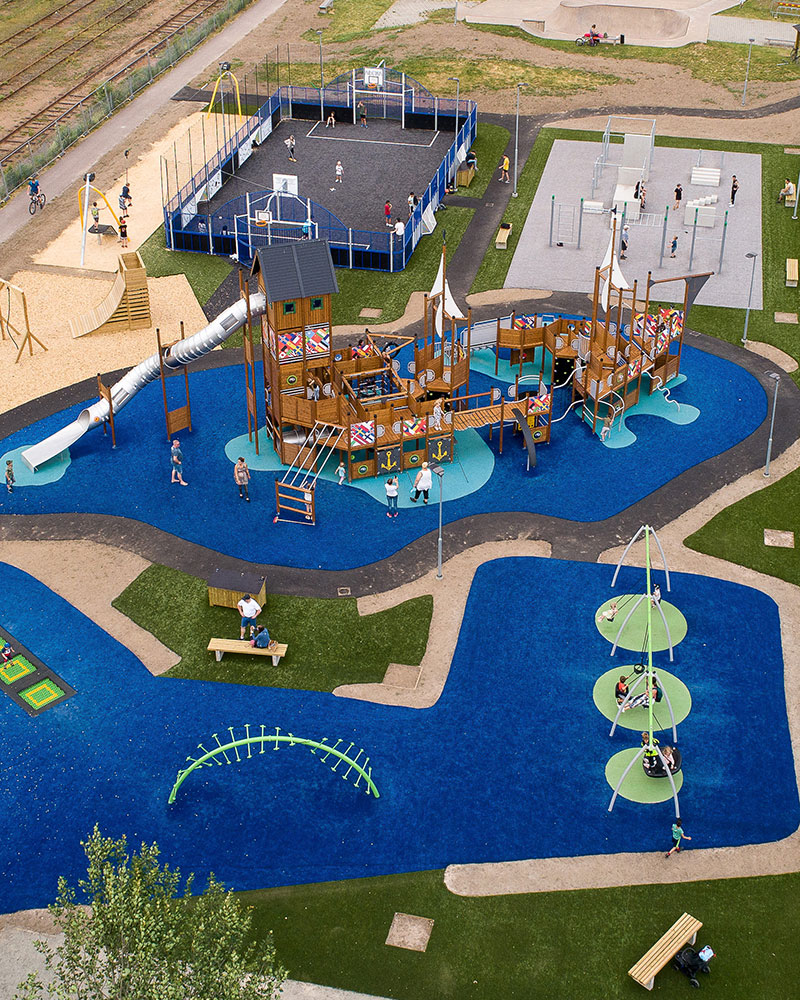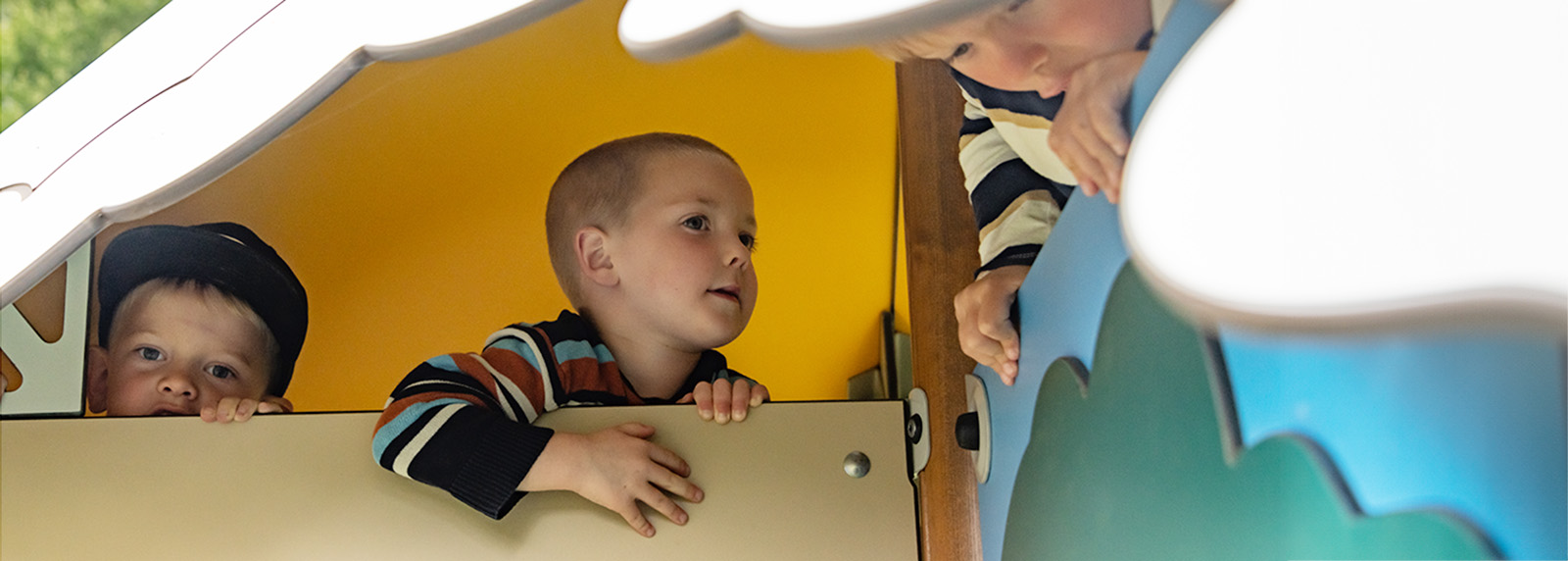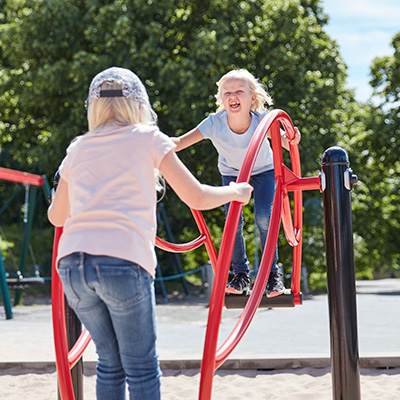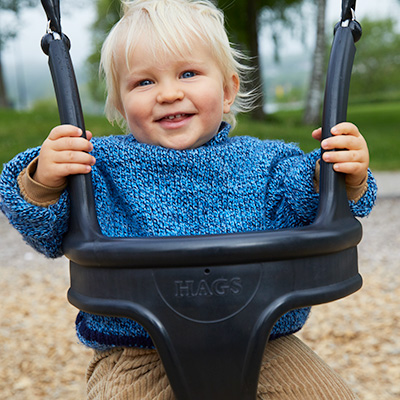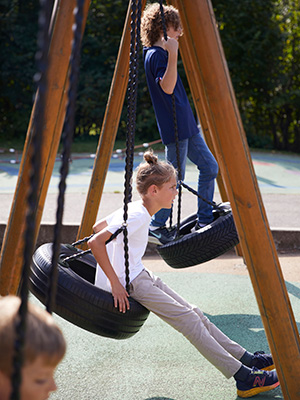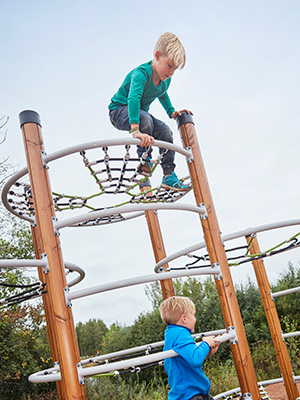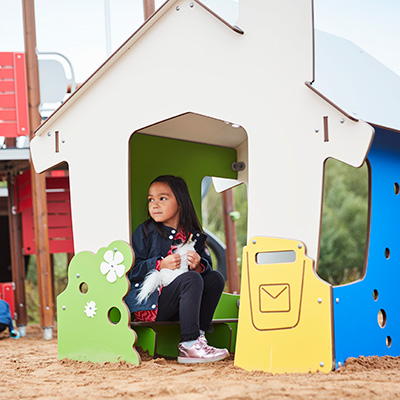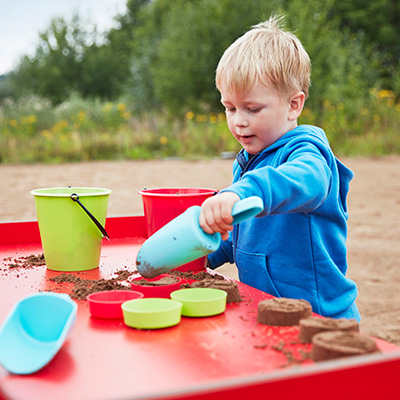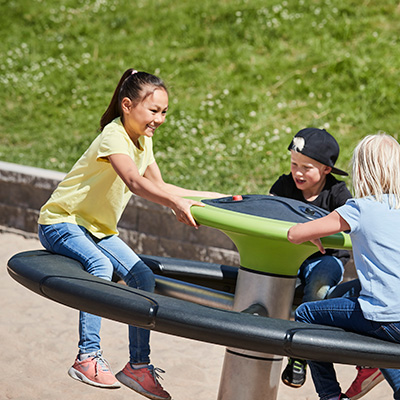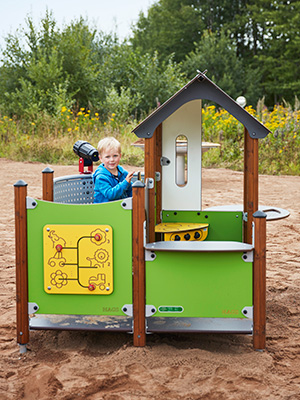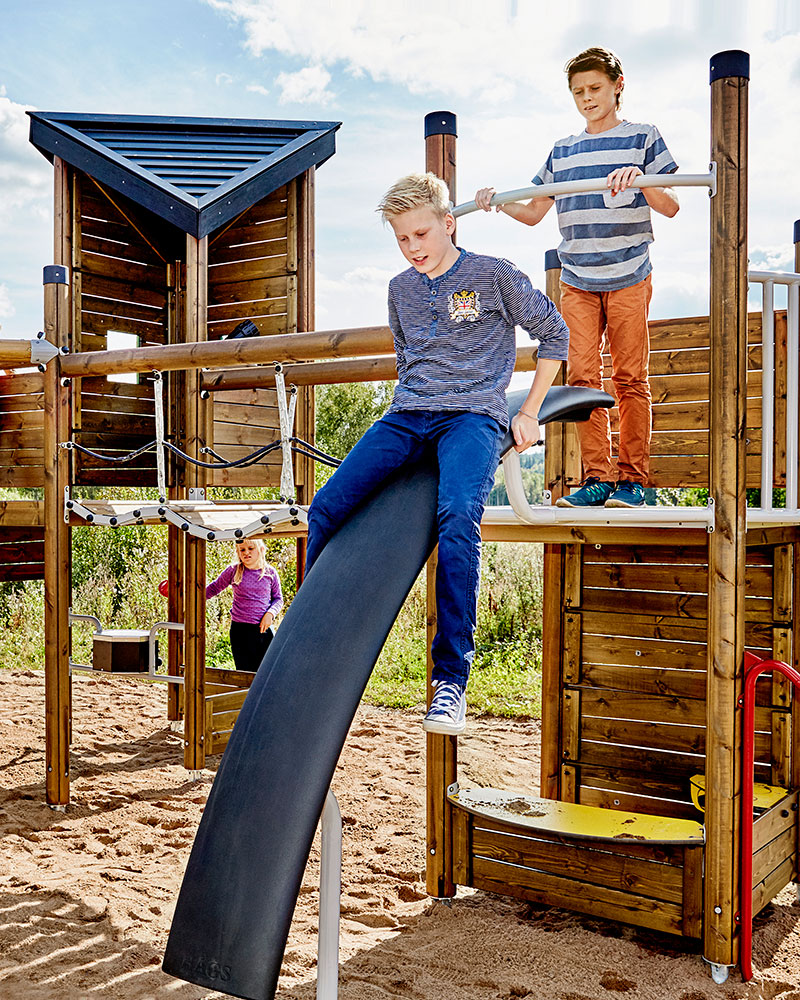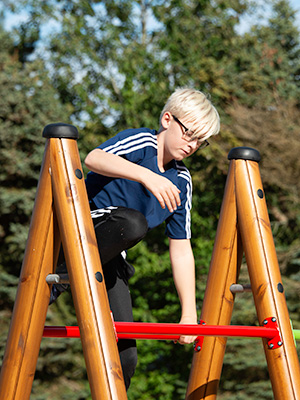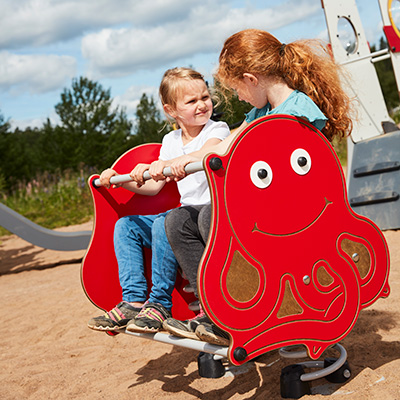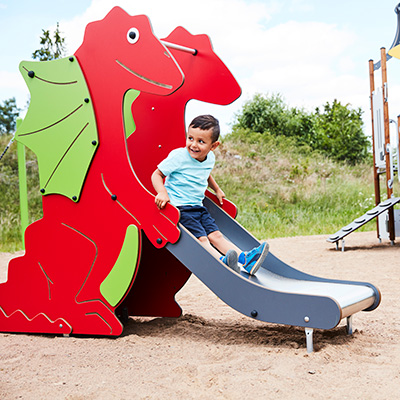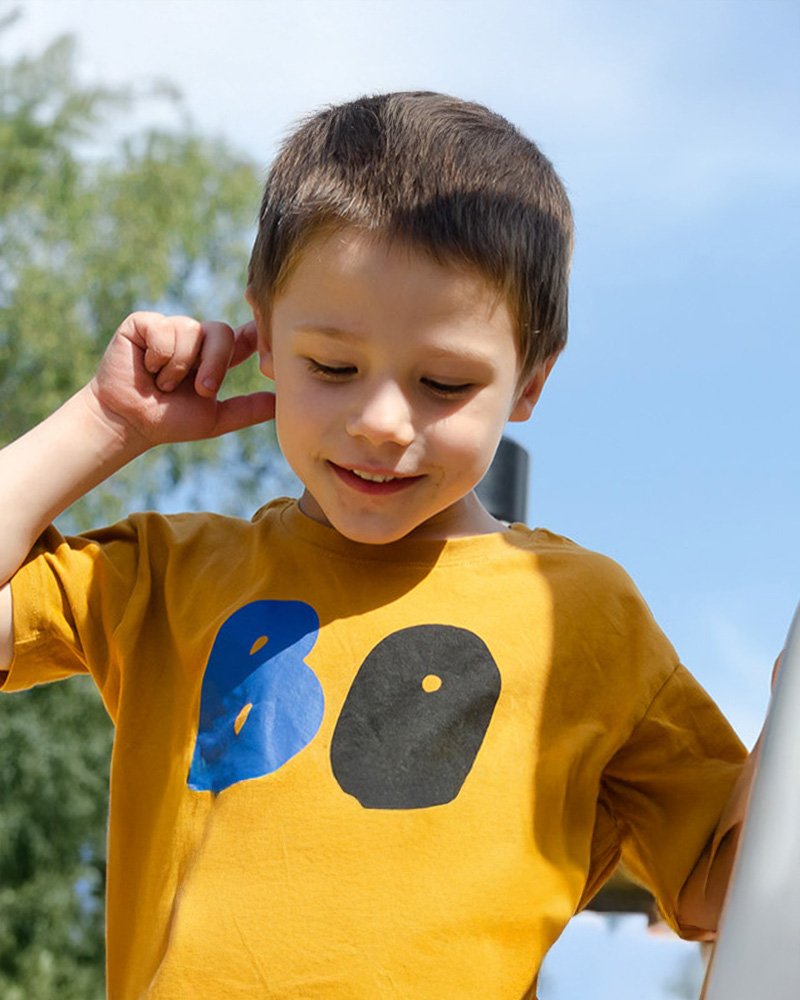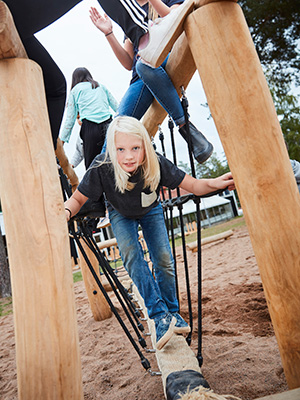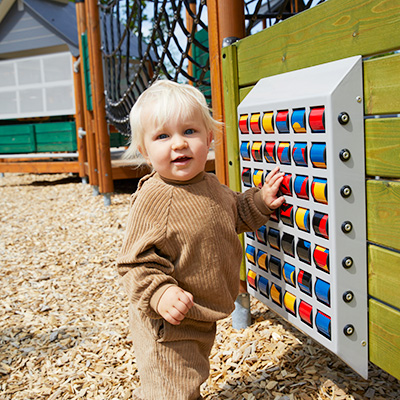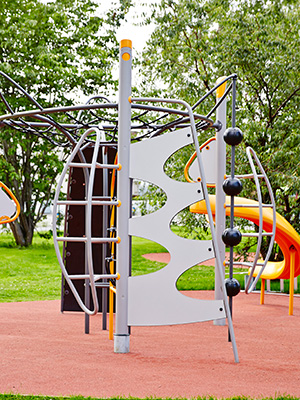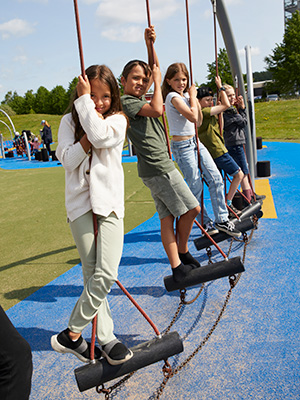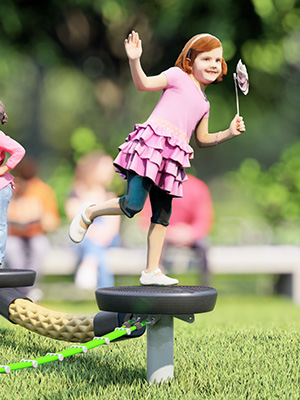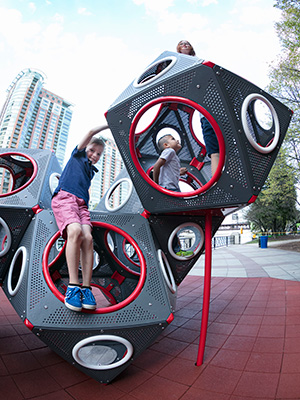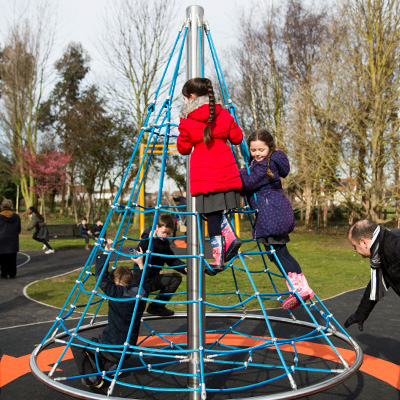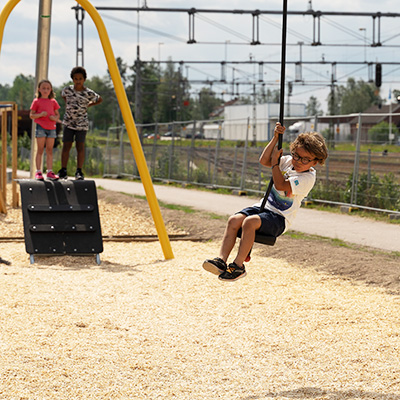Ako vybavenie ihriska podporuje hodnoty hry
Inkluzívne ihriská sú miesta, kde sa môžu hrať deti všetkých schopností a získať bohatú škálu fyzických, zmyslových a sociálnych zážitkov. Tu skúmame, ako množstvo, kvalita, rozmanitosť a vzájomné vzťahy herných zariadení a prvkov podporujú tieto herné hodnoty a inkluzívne zážitky.
Aká je hodnota hry?
Hodnota hry sa vzťahuje na výhody, ktoré prostredie, objekt alebo vybavenie poskytuje detským herným zážitkom. Vysoká hodnota hry znamená, že deti sa môžu zapojiť do rôznych aktivít a rozvíjať svoje nápady, napríklad používať kartónovú krabicu ako úkryt, auto alebo bránku.
Hodnota hry je rozdelená do troch kategórií:
- Fyzická hračka
- Zmyslová hračka
- Sociálna hračka
Každý typ je rozhodujúci pre rozvoj a zábavu dieťaťa. Zahrnutie kombinácie všetkých troch typov pri výbere herného vybavenia a prvkov vytvára vzrušujúcejší a inkluzívnejší herný priestor.
Fyzické herné zážitky
Herné aktivity ako točenie, šmýkanie, hojdanie, kývanie a lezenie sú všetko fyzické zážitky.
Točenie
Aktivity s točením stimulujú viaceré oblasti mozgu, čím zvyšujú potenciál učenia, priestorové vnímanie, rytmus, rovnováhu, svalovú kontrolu a hrubé motorické zručnosti. Zahrňte vybavenie, ktoré umožňuje deťom sedieť, stáť alebo ležať počas točenia. Pre väčšiu výzvu ponúknite točiace vybavenie s držadlami aj bez nich.
Šmýkanie
Šmykľavky ponúkajú deťom výšku, pohyb a vzrušenie z rýchlosti, stimulujú ich vestibulárny systém a rovnováhu. Poskytnite šmykľavky rôznych výšok a typov (tunelové, textúrované, zakrivené, rovné, špirálové) pre rôzne zážitky. Pre inkluzívnosť zabezpečte, aby aspoň jedna šmykľavka nevytvárala statickú elektrinu pre používateľov kochleárnych implantátov, dieťa malo miesto na sedenie pri získavaní invalidného vozíka a aby bola najvyššia šmykľavka prístupná.
Hojdačky
Hojdanie ponúka zábavný pohyb, imaginatívnu hru a výzvy pre vestibulárny systém. Zahrňte vybavenie pre pohyby tam a späť aj zo strany na stranu. Poskytnite viacero hojdacích prvkov pre rôzne polohy (sedenie, státie, ležanie) alebo použite univerzálne vybavenie, ktoré podporuje viacero zážitkov.
Hojdačky
Hojdanie poskytuje zábavnú pohybovú aktivitu, podporuje imaginatívnu a sociálnu hru a rozvíja vestibulárny systém. Zahrňte hojdačky s lineárnym a kruhovým pohybom a ponúknite rôzne typy a veľkosti, ako sú pásové hojdačky, hojdačky pre batoľatá, hojdačky z pneumatík a hojdačky v tvare vtáčieho hniezda, aby vyhovovali všetkým schopnostiam.
Lezenie
Inkluzívne ihrisko by malo ponúkať riziko, výzvu, vzrušenie a rôznorodý pohyb na zlepšenie motorických zručností ako rovnováha, koordinácia, sila a obratnosť. Úroveň 1 obsahuje prvky nízko pri zemi s držadlami a zrejmými cestami na podporu. Úroveň 2 zahŕňa šikmé zariadenia s viacerými, zrejmými cestami a dobrou podporou. Úroveň 3 je vysoká a vertikálna, s minimálnou podporou a vyžadujúca obratnosť.
Plazenie
Zahrňte aspoň dve lezecké aktivity s rôznymi úrovňami náročnosti. Jednoduchá aktivita úrovne 1 môže byť krátky tunel na zemi alebo nerovný povrch. Úroveň 2 môže obsahovať dlhší tunel na zemi alebo vyvýšený s prístupnými cestami na oboch stranách. Pre úroveň 3 zvážte tunel, ktorý mení výšky, ponúkajúci príležitosti na lezenie medzi rôznymi úrovňami.
Vyvažovanie
Inkluzívne ihrisko by malo ponúkať rôznorodé aktivity pre riziko, výzvu a zlepšenie rovnováhy. Zahrňte možnosti vyváženia s podporou jednej aj oboch rúk, ako aj zariadenia na sedenie a státie, ako je stolička. Poskytnite statické a dynamické aktivity na vyváženie, rovné a zakrivené cesty a zabezpečte, aby niektoré zariadenia boli na úrovni zeme a niektoré vyvýšené s prístupnými trasami.
Skákanie a odrážanie
Skákanie a odrážanie vyzýva a rozvíja vestibulárny a proprioceptívny systém, ponúka zábavu a pocit lietania. Zahrňte aspoň jednu aktivitu na sedenie a ďalšiu na státie, alebo jedno zariadenie, ktoré umožňuje oboje.
Chôdza, beh a kotúľanie
Poskytnite deťom príležitosti hrať sa s priateľmi, budovať vytrvalosť, zvyšovať svalový tonus a zvládnuť dynamickú rovnováhu. Nechajte priestor na hry ako naháňačka alebo pridajte dizajn dráhy do povrchu. Zahrňte prekážkové dráhy alebo bludiská dostatočne široké pre invalidné vozíky. Zvážte cestu, ktorá stúpa a klesá, aby pridala zábavu a budovala silu.
Pohyby pre používateľov invalidných vozíkov
Umožnite deťom na invalidných vozíkoch hrať sa rovnako s priateľmi a zažiť pohyb, ktorý stimuluje ich vestibulárny systém bez opustenia vozíka. Je dôležité poskytnúť zariadenie, ktoré pohybuje dieťaťom aj jeho vozíkom, a malo by to byť aj spoločenský zážitok, kde sa môže hrať viacero osôb naraz.
Zmyslové herné zážitky
Inkluzívne ihriská by mali poskytovať deťom všetkých schopností senzorické herné zážitky okrem fyzických aktivít. Tieto senzorické zážitky by mali zahŕňať hmatové, sluchové a vizuálne prvky, interakciu s prírodnými prvkami a útulné, príjemné priestory.
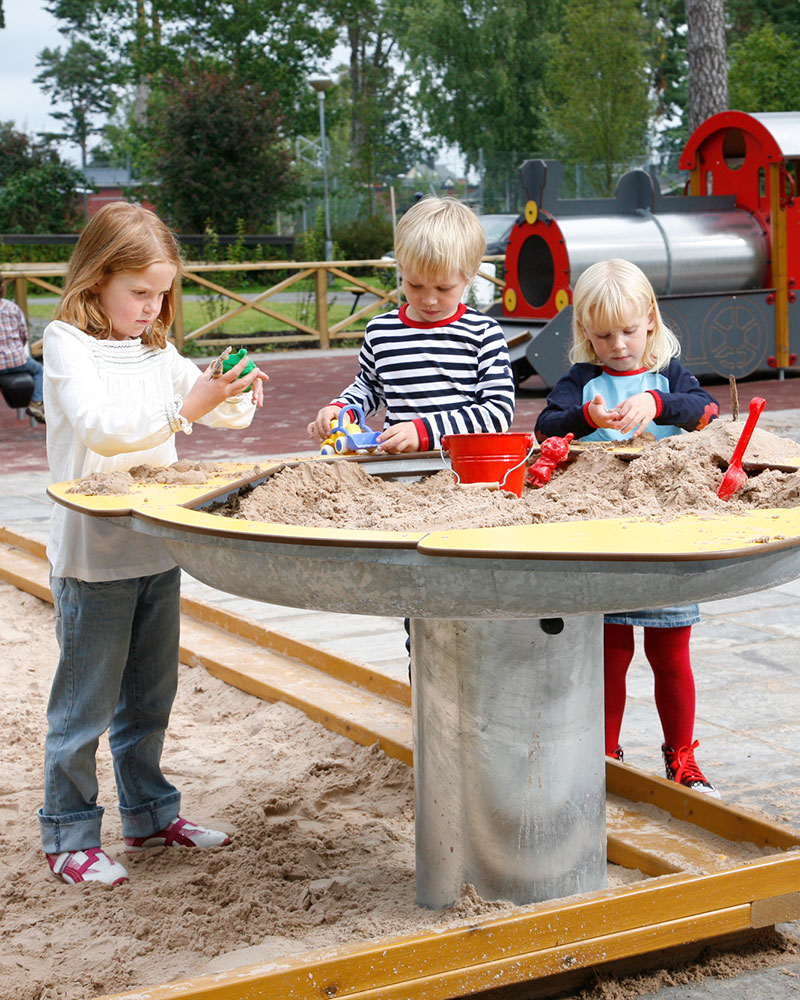
Hmatové zážitky
Poskytnite deťom príjemné zážitky, ktoré rozvíjajú ich hmatové vnímanie interakciou s rôznymi textúrami: hladké (kovové tyče, šmýkačky), mäkké (tráva, látka), tvrdé (kamene, kov), drsné (balvany, lano), zrnité (piesok, hlina) a nerovné (hrboľaté šmýkačky, textúrované chodníky). Podporujte aktivity, ktoré zapájajú celé telo, ako je kotúľanie sa z kopcov alebo zakrývanie sa pieskom alebo vodou. Textúrované alebo zvlnené chodníky tiež ponúkajú zábavné zážitky s kolesovými hrami.
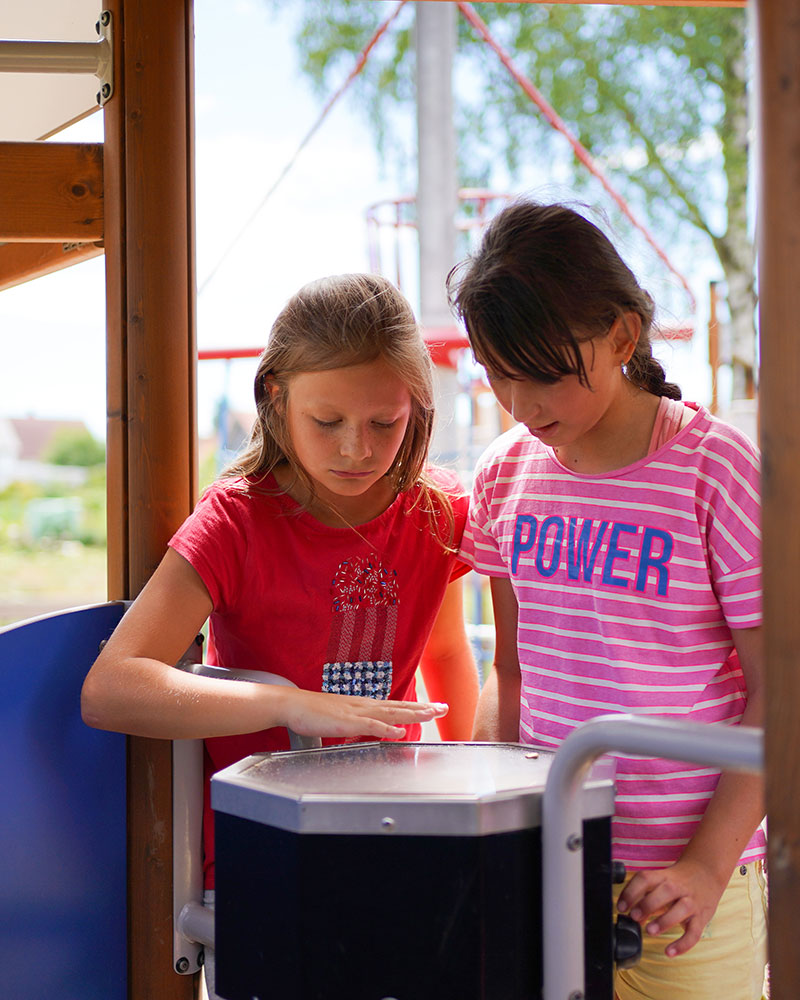
Sluchové zážitky
Pomôžte rozvíjať sluchový systém začlenením herných prvkov, ktoré oslovujú zmysel pre sluch. To zahŕňa vybavenie ako hovoriace trubice na vzdialené rozhovory, vonkajšie hudobné nástroje, tlačidlá generujúce zvuk, oblasti, ktoré vytvárajú zvuky pri vstupe, a povrchy, ktoré produkujú zvuky pri chôdzi.
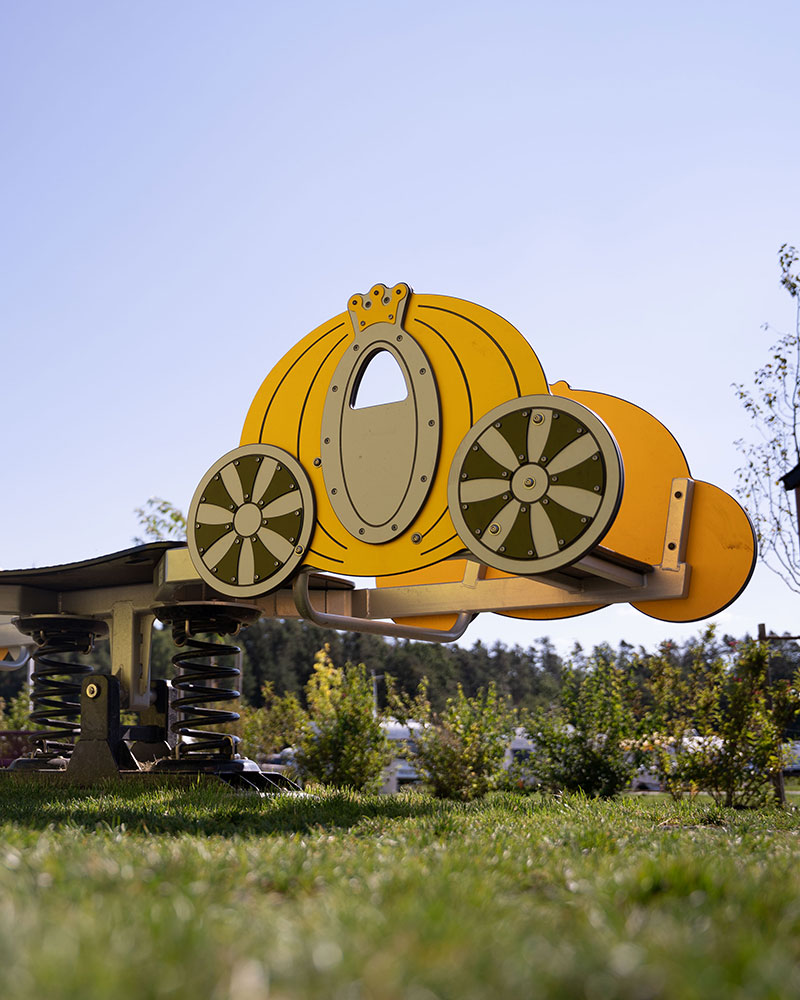
Vizuálne zážitky
Zahrňte prvky a vybavenie v hracom priestore, ktoré sú vizuálne príťažlivé, prekvapujúce a potešujúce, aby pomohli rozvíjať vizuálny senzorický systém. Používajte hracie panely, ktoré pozývajú na sledovanie, sledovanie alebo porovnávanie, aby sa zlepšili vizuálne schopnosti. Plánujte s ohľadom na farby a estetiku, pričom začleňte prvky ako kontrastné farby, vzory, sochy, vlajky a dlažbu.
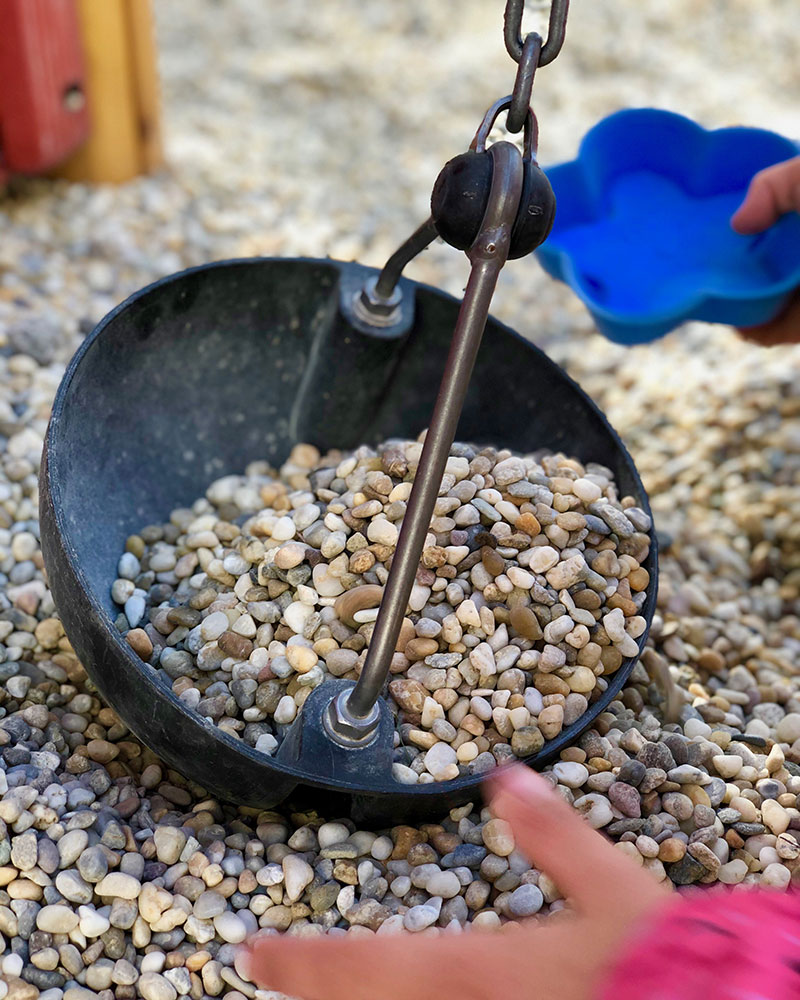
Interakcia s prírodou
Umožnenie deťom zapojiť sa do prírody stimuluje kreatívnu, imaginatívnu a sociálnu hru, poskytujúc množstvo zdravotných a wellness výhod. Detské ihriská by mali obsahovať prírodné prvky ako stromy, kríky, trávy, kôru, pôdu, piesok, vodu a kamene. Výsadba prvkov, ktoré priťahujú vtáky, malé cicavce a hmyz, tiež povzbudzuje deti k interakcii s prírodou. Integrácia prírodných prvkov do celého priestoru na hranie zlepšuje senzorický zážitok.
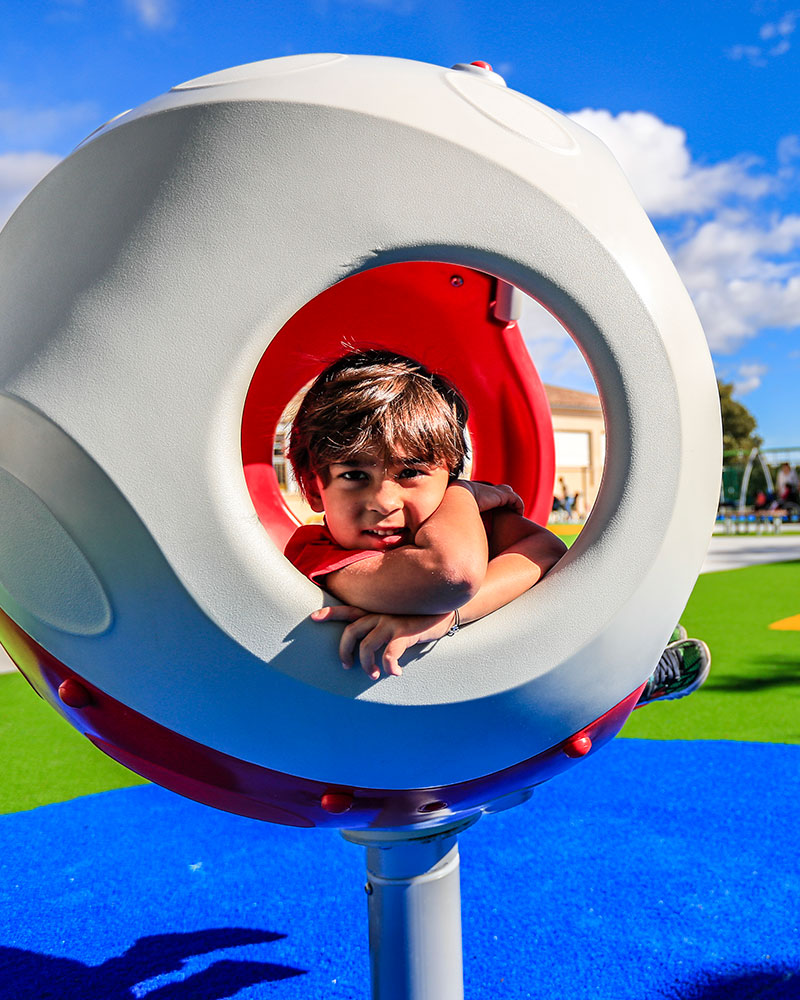
Útulné miesta
Zahrňte aspoň jednu oblasť v hracom priestore, kde sa dieťa môže uvoľniť, odbúrať stres alebo zapojiť do sociálnej, imaginatívnej alebo rolovej hry. Táto oblasť by mala pôsobiť uzavreto, ale zároveň umožniť rodičom alebo opatrovateľom vidieť dieťa. Príklady zahŕňajú priestory pod viacúčelovými štruktúrami, hracie domčeky alebo tunely s oknami.
Sociálne herné zážitky
Ihrisko by malo deťom poskytnúť príležitosť zapojiť sa do sociálnej hry a interakcie s inými deťmi. V tejto sekcii sa pozrieme na kooperatívnu hru, sociálnu interakciu, dramatickú a imaginatívnu hru.
Kooperatívna hra a sociálna interakcia
Podporte sociálnu hru zahrnutím zariadení, ktoré vyžadujú viacerých používateľov, ako sú hojdačky a basketbalové koše. Prvky ako voda, piesok a prírodné hry, ako aj skupinové sedenie, podporujú interakciu. Poskytnite priestory, kde deti môžu pozorovať a napodobňovať ostatných, čím podporíte učenie a zábavu.
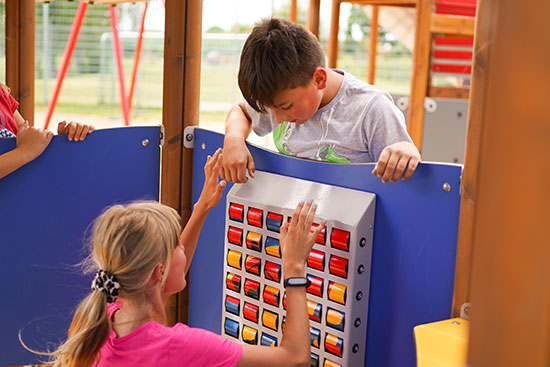
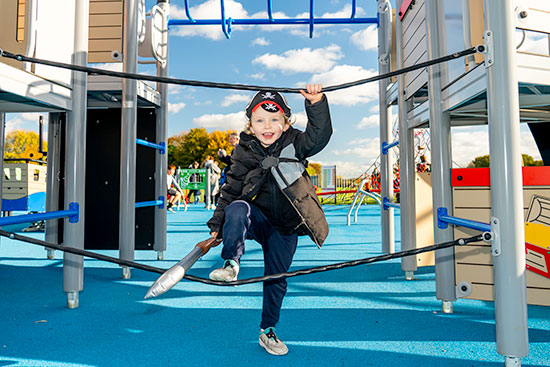
Dramatická a imaginatívna hra
Dramatická hra zlepšuje jazykové, kognitívne a sociálne zručnosti detí tým, že im umožňuje vytvárať a hrať herné témy so spontánnymi, deťmi iniciovanými a otvorenými rolami. Použite mix abstraktného a realistického herného vybavenia, ako sú tematické štruktúry, javiská a herné domčeky. Zahrňte rekvizity a voľné časti, ako sú piesok, konáriky, stavebné bloky a kartónové krabice, ktoré sa dajú ľahko manipulovať pre kreatívnu hru, podporujúc sociálne, imaginatívne a kreatívne zážitky.
Navrhovanie inkluzívneho ihriska
Navrhovanie pre inklúziu vyžaduje premyslenú integráciu herných hodnôt a prístupnosti. Nasledujúce sekcie zdôrazňujú kľúčové prvky, ktoré treba zvážiť pri vytváraní inkluzívneho herného priestoru. Táto príručka je flexibilná, umožňuje dizajnérom uprednostniť určité aspekty a vyvinúť vlastné stratégie, aby čo najlepšie vyhovovali potrebám používateľov.
Preskúmajte stránky nižšie, aby ste si mohli naplánovať a navrhnúť inkluzívne ihrisko.

